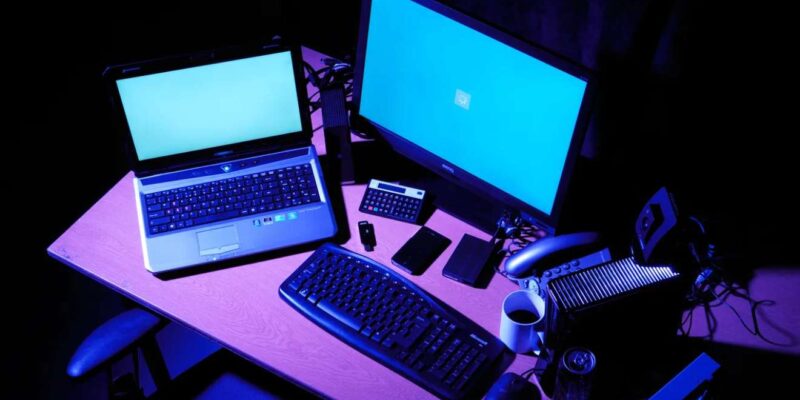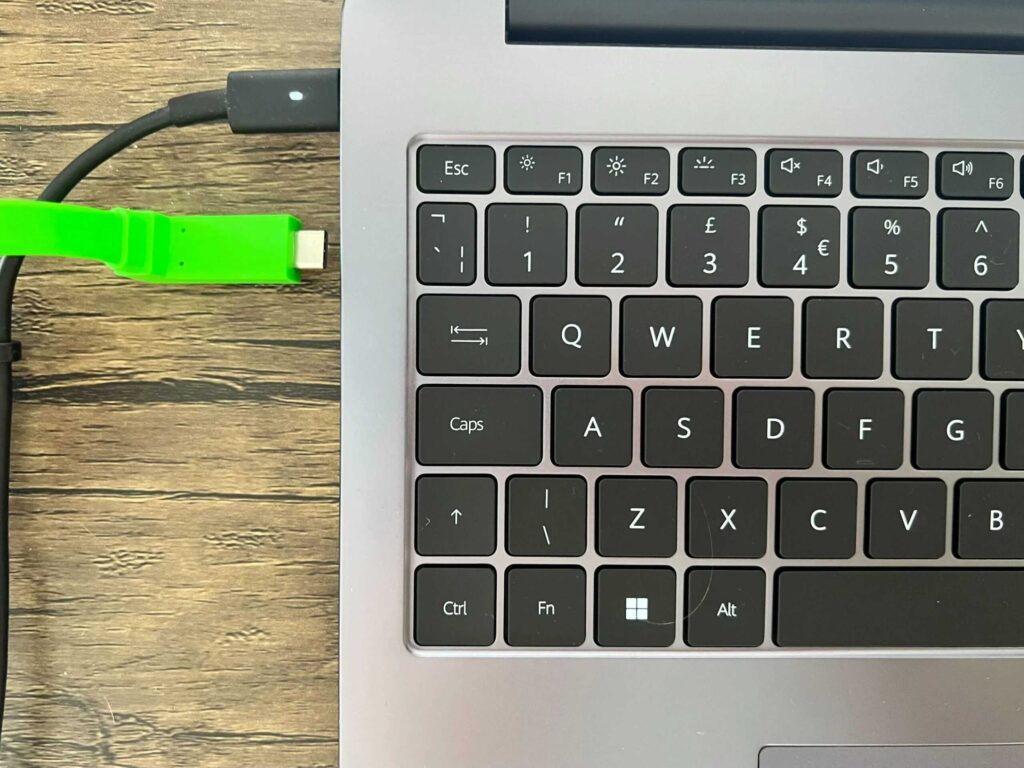
Having a lot of screen room is important for getting work done, whether you’re at the office or at home. A simple fix for when you need more space on your desktop or are just sick of squinting at your small laptop screen all day is to use your laptop as a monitor. This easy trick lets you increase the size of your screen without buying a separate second monitor. We’ll look at different ways on how to use laptop as monitor in Home or Office.
Why Use Your Laptop as a Monitor?
Before we get into the technical aspects, let’s discuss why using your laptop as a monitor can be beneficial. By repurposing your laptop screen, you can enjoy the following advantages:
- Increased Productivity: With additional screen space, you can view multiple documents, spreadsheets, or applications side-by-side, reducing the need for constant window switching.
- Enhanced Multitasking: Keep important tools, chat applications, or real-time notifications on one screen while focusing on your main tasks on the primary display.

- Flexible Workstation: Whether you’re working from home, in a coffee shop, or on the go, using your laptop as a monitor allows you to create a personalized, portable workstation.
- Cost Savings: Instead of purchasing a separate monitor, utilizing your existing laptop as a second screen eliminates the need for additional hardware expenses.
How to Use Laptop as Monitor?
Now that we understand the benefits, let’s explore different methods to transform your laptop into a monitor.
Method 1: Utilize External Display Connectors
There are many ports on laptops that are especially made for connecting external monitors. These ports are different based on the make and model of your laptop. HDMI, Thunderbolt, Mini DisplayPort, and USB-C are all popular ways to connect a display. Here are the steps you need to take to use your laptop as a monitor:
- Identify the Port
First, locate the display port on your laptop. It may be a familiar port like HDMI, or a smaller, less recognizable version such as Thunderbolt or Mini DisplayPort
- Check Compatibility
Ensure that your laptop’s port is compatible with the connector on your external display. If necessary, purchase an adapter or cable that can bridge the connection between the two.
- Connect the Cable
Plug one end of the cable into your laptop’s display port and the other end into the corresponding port on your external monitor.
- Configure Display Settings
Once the physical connection is established, access your laptop’s display settings. Depending on your operating system, you can usually find these settings in the Control Panel or System Preferences. Configure the display settings to extend the desktop onto the external monitor.
Method 2: Harness the Power of USB Ports
If your laptop lacks dedicated display connectors, don’t worry! You can still use your laptop as a monitor by leveraging the versatility of USB ports. Both USB-C and traditional USB ports can be utilized for connecting external displays. Here’s how to set it up:
- Check USB Compatibility
Determine if your laptop has USB-C or traditional USB ports. USB-C ports offer more flexibility, but traditional USB ports can still support external displays with the help of adapters or docking stations.

- Connect the Cable
Plug one end of the cable into your laptop’s USB port and the other end into the appropriate port on your external display.
- Configure Display Settings
Similar to Method 1, configure your laptop’s display settings to extend the desktop onto the external monitor.
Method 3: Repurpose Your Tablet as a Second Monitor
If you have a tablet lying around, repurposing it as a second monitor is a creative and budget-friendly option. Depending on your device’s operating system, you can use built-in features or third-party apps to extend your laptop’s display. Follow these steps to utilize your tablet as a second monitor:
- Apple Sidecar (for iPad)
If you own an iPad and a Mac, you can leverage Apple’s Sidecar feature. Connect your iPad to your Mac via USB-C or Lightning cable, then enable Sidecar in your Mac’s System Preferences. This will extend your Mac’s display onto your iPad.
- Third-Party Apps (for Android and iOS)
For users with Android or iOS tablets, third-party apps like DuetDisplay offer similar functionality. Install the app on your tablet and the corresponding software on your laptop. Connect the devices via cable or wirelessly, and configure the display settings to extend your laptop’s screen.
Method 4: Attach a Monitor Directly to Your Laptop
You might want to connect a second monitor straight to your laptop for a more seamless and unified look. There are monitors that are meant to attach to the back of your laptop screen and give you more space for your screen when you need it. Some types, like the Duex Pro, can slide out to the side, which makes them easier to carry and takes up less room.
On the other hand, there are portable screens that only need one connection, which is often USB power. These screens are small, easy to store, and give you more screen space without the need for a separate power supply.
Method 5: Offload Work to Your Smartphone or Tablet
In certain situations, you may not require a dedicated second monitor. Instead, you can offload some tasks to your smartphone or tablet, reducing the strain on your laptop’s screen. Here are some examples:
- Email Management
Use your phone or tablet to quickly scan and respond to emails, while reserving your laptop’s screen for more intensive work.
- Messaging Application
Keep messaging apps like Slack or Microsoft Teams on your mobile device for real-time communication, freeing up your laptop’s screen for other applications.
- Monitoring Tools
Utilize your smartphone or tablet to monitor dashboards, news feeds, or other metrics, allowing you to keep an eye on important information without cluttering your laptop screen.
With a stand or wireless charger, you can prop up your smartphone or tablet for easy viewing while you focus on your primary tasks on your laptop.
Also Read: How to Factory Reset HP Laptop? (Step-by-Step Guide)
Final Words
Instead of being limited to a small laptop screen, why not use your power to open more screen space? But first you need to learn how to use laptop as monitor and luckily, we explained it in details. You can make your desk bigger, get more done, and save money by using your laptop as a monitor.
The process is simple and can be quickly changed to fit your needs, whether you use USB ports, external display connectors, tablets, or dedicated secondary monitors. You can make a flexible and useful desk that improves your workflow and makes it easier on your eyes and back by looking into these methods and using the tips given.

![How to Pause Location on Find My iPhone Without Them Knowing? [2024] 20 how to pause location on find my iphone](https://izood.net/wp-content/uploads/2024/10/How-to-Pause-Location-on-Find-My-iPhone-Without-Them-Knowing-400x300.png)


![How To Inspect Element on iPhone [4 Methods] 23 how to inspect element on iphone](https://izood.net/wp-content/uploads/2024/10/how-to-inspect-element-on-iphone-3-400x300.png)


